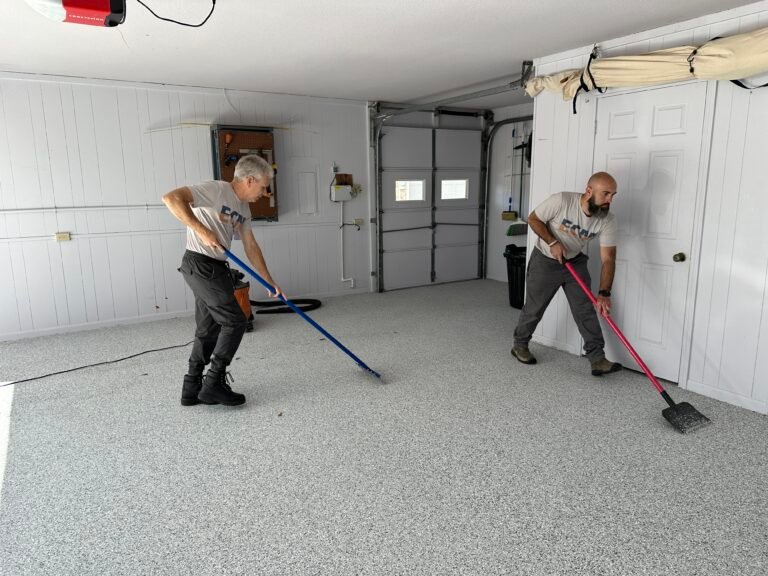Will Epoxy Flooring Turn Yellow Over Time?
For many homeowners in East Texas, the phrase “epoxy flooring” is practically synonymous with “garage floor upgrade.” Epoxy has enjoyed a long-standing reputation for durability and chemical resistance. But a common worry persists: “Will epoxy flooring turn yellow over time?” In regions like Tyler, Whitehouse, and Longview, where UV exposure can be high, this question is especially relevant. Below, we’ll explore the truth behind epoxy yellowing, why it happens, and why some homeowners now choose polyaspartic to avoid the issue entirely.
The Science Behind Epoxy Flooring Yellowing
- UV Sensitivity
Traditional epoxy coatings are not UV-stable. Over time, sunlight (or even intense artificial lighting) can break down epoxy’s chemical bonds, leading to a yellow, dull appearance. - Oxidation
Epoxy resins can undergo oxidation when exposed to oxygen and heat, altering their color. Think of this process as something akin to plastic toys fading or yellowing in prolonged sunlight.
Pro Tip: If your epoxy floor directly faces an open garage door or large windows, it’s more prone to UV-induced yellowing—especially in sunny East Texas climates.
Factors That Accelerate Yellowing
- Direct Sunlight
Even a few hours of direct sun daily can speed up the discoloration process. - High Temperatures & Humidity
East Texas heat coupled with moisture can stress epoxy, sometimes causing faster yellowing or chalking. - Inferior Product Quality
Lower-grade epoxies or DIY kits often lack protective additives that slow UV degradation.
The Impact on Your Garage Floor’s Look and Lifespan
- Aesthetic Decline
A once-shiny epoxy floor may develop patchy or uneven yellow spots, detracting from your garage’s appearance. - Reduced Market Value
Potential homebuyers might see a yellowing floor as an indicator of poor installation or low-grade materials. - Maintenance Woes
Sanding or re-coating is often needed to restore the floor’s original look—a process that can be time-consuming and costly.
Polyaspartic: The UV-Stable Alternative
Enter polyaspartic—a modern coating that addresses epoxy’s biggest flaws:
- UV Resistance
Polyaspartic formulations include UV inhibitors, enabling them to resist yellowing from sunlight. - Faster Cure Times
In many cases, a polyaspartic floor can handle foot traffic in hours—and you only need to wait about 48 hours before parking vehicles. - Decorative Finishes
With flake or quartz broadcast options, polyaspartic floors can mirror the look of epoxy while offering better longevity and a more stable color profile.
Pro Tip: If you’re worried about future fading or plan to keep your garage door open for ventilation or projects, polyaspartic is a top recommendation for East Texas homeowners.
When to Consider an Upgrade to Your Epoxy Flooring
- Noticeable Yellowing
If your epoxy floor has noticeable discolored patches or a dull sheen, it might be time to refinish. - Surface Damage
Cracks, chips, or peeling epoxy can worsen with continued exposure, making a switch to polyaspartic more cost-effective in the long run. - High UV Exposure
Those with open-sided workshops or garages that double as a hangout space often find polyaspartic more suitable for daily sun exposure.
So, will epoxy flooring turn yellow over time? In many cases, yes – especially under strong UV conditions like East Texas. While epoxy remains popular, it’s not immune to sunlight and temperature swings that lead to fading or discoloration. The good news is that polyaspartic coatings address these issues, offering UV stability, faster cure times, and longer life.
If you’re tired of a faded, yellowing floor, or you’re planning a garage flooring project and want to avoid the issue altogether, contact Epoxy Coat Masters. We’ll assess your space, explain polyaspartic vs. epoxy, and help you choose a non-yellowing solution that stays vibrant for years to come.







